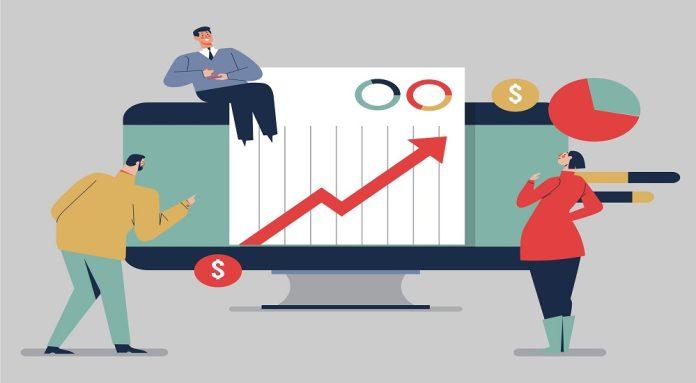In the fast-paced and dynamic world of business, staying ahead of the competition requires more than just offering a great product or service. One crucial aspect that often separates thriving businesses from struggling ones is their ability to accurately predict and meet customer demand. This is where demand analysis and forecasting come into play. In this comprehensive guide, we’ll delve into the significance of demand analysis and forecasting, explore the process of demand estimation, and highlight the best practices that can help businesses achieve sustainable growth.
Understanding Demand Analysis
Demand analysis serves as the foundation of effective demand forecasting. It involves a meticulous examination of historical sales data, market trends, consumer behavior, and external factors that influence demand. By dissecting these components, businesses gain insights into the patterns and fluctuations that shape their customer demand.
The Significance of Demand Forecasting:
Demand forecasting is a strategic tool that aids businesses in planning and decision-making. Accurate forecasts empower companies to allocate resources efficiently, manage inventory effectively, optimize production processes, and even anticipate market shifts. By predicting demand, businesses can minimize overstocking or understocking issues, reduce costs, and enhance customer satisfaction through timely order fulfillment.
The Process of Demand Estimation:
Demand estimation is a crucial step within demand analysis and forecasting. It involves using statistical techniques to quantify the relationship between various factors that influence demand, such as price, consumer income, and market trends. Here’s a breakdown of the process:
1. Data Collection:
Gathering historical sales data is the starting point. This data provides insights into past consumer behavior and helps identify trends over time. The more comprehensive and accurate the data, the more reliable the forecast will be.
2. Selection of Variables:
Choosing the right variables is essential for accurate demand estimation. Factors like price changes, seasonality, economic indicators, and advertising efforts can significantly impact demand. By selecting the most relevant variables, businesses can build a more precise estimation model.
3. Model Building:
With the data and variables in hand, businesses can now build a demand estimation model. This is where statistical techniques like regression analysis come into play. Regression helps quantify the relationship between the chosen variables and demand patterns.
4. Validation and Refinement:
Once the model is built, it’s crucial to validate its accuracy. This can be done by comparing the model’s predictions with actual historical data. If discrepancies arise, adjustments can be made to refine the model and improve its predictive power.
Best Practices for Demand Analysis and Forecasting:
To harness the power of demand analysis and forecasting, businesses can adopt the following best practices:
1. Embrace Technology:
Leverage advanced software and tools that utilize artificial intelligence and machine learning to analyze complex data sets. These technologies can uncover hidden insights and make predictions with a higher degree of accuracy.
2. Collaborate Across Departments:
Effective demand forecasting requires input from various departments, including sales, marketing, and finance. Collaborative efforts ensure a holistic view of the business landscape, leading to more informed decisions.
3. Monitor External Factors:
External factors like economic conditions, competitor behavior, and technological advancements can significantly impact demand. Monitoring these factors and incorporating them into your forecasting model can enhance its accuracy.
4. Regularly Update Forecasts:
Market dynamics are constantly changing. To ensure your forecasts remain relevant, update them regularly based on the latest data and trends. This agility allows businesses to adapt to shifts in consumer behavior swiftly.
5. Consider Qualitative Insights:
While quantitative data forms the backbone of demand forecasting, qualitative insights shouldn’t be ignored. Customer feedback, market research, and expert opinions can provide valuable context that quantitative data alone might miss.
The Future of Demand Forecasting and Estimation:
As we gaze into the future, it’s evident that demand forecasting and estimation are poised to undergo significant transformations. Technological advancements, evolving consumer behaviors, and the increasing availability of data are set to reshape the landscape of demand analysis. Here’s a glimpse of what lies ahead:
1. Integration of AI and Big Data:
The marriage of artificial intelligence (AI) and big data is set to revolutionize demand forecasting. AI algorithms can process massive datasets with unparalleled speed and accuracy, uncovering intricate patterns and correlations that were previously undetectable. This fusion will enable businesses to make predictions based on a more comprehensive range of variables, leading to highly precise forecasts.
2. Real-time Data Analytics:
In the digital age, real-time data has become a cornerstone of decision-making. The future of demand forecasting will likely see businesses harnessing real-time data analytics to track consumer behaviors, market trends, and external factors as they unfold. This agility will empower companies to adjust their strategies on the fly, responding promptly to changes in demand dynamics.
3. Predictive Analytics at Scale:
Predictive analytics, already a potent tool, will become even more accurate and accessible. Businesses will be able to implement predictive models at scale, enabling localized demand forecasts and personalized offerings. This level of granularity will enhance customer experiences and boost satisfaction.
4. Emphasis on Cognitive Insights:
Cognitive technologies, such as natural language processing, will enable businesses to extract insights from unstructured data sources like social media, customer reviews, and even customer service interactions. These qualitative insights will supplement quantitative data, offering a more holistic understanding of customer preferences and sentiments.
5. Enhanced Collaboration with Suppliers:
Demand forecasting won’t be limited to individual businesses. Collaborative demand forecasting with suppliers and partners will become more prevalent. This approach will lead to streamlined supply chains, reduced lead times, and improved inventory management across the entire ecosystem.
Conclusion:
The future of demand forecasting and estimation is marked by innovation and data-driven precision. As AI, real-time analytics, predictive models, and collaborative approaches take center stage, the business landscape will witness a new era of informed decision-making and customer-centric strategies. By staying attuned to these developments, businesses can navigate the evolving landscape with confidence, ensuring they are always a step ahead in meeting customer demand.
